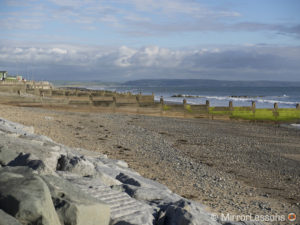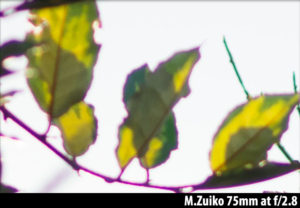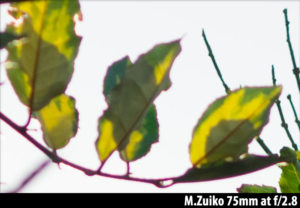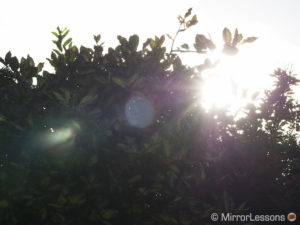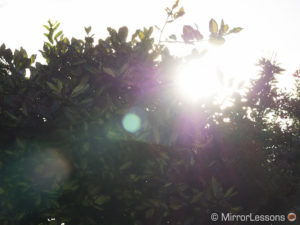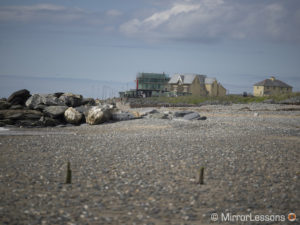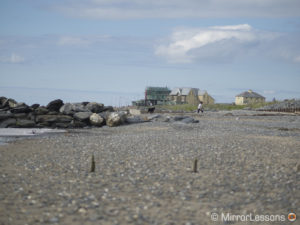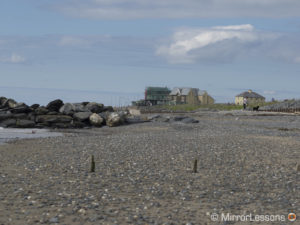If you are a professional events photographer, you can go one of two routes when choosing a telephoto lens.
On one hand, you can opt for a telephoto prime with a very bright maximum aperture. The advantage of a lens like this isn’t just the extra shallow depth of field; there is also the fact that you can work in poor light conditions without having to raise your ISO or reduce your shutter speed too much.
However, a fixed focal length can sometimes be restrictive, especially if the subject’s distance from the camera frequently changes or there isn’t enough space to ‘zoom with your feet’ to use the popular expression. In cases like this, you may prefer a flexible focal range with a slightly slower constant aperture.
Within the Micro Four Thirds range, there is currently only one telephoto prime with a fast aperture: the M.Zuiko 75mm f/1.8 (150mm in full-frame terms), while there are two telephoto zooms with a constant aperture: the Lumix G 35-100mm f/2.8 and M.Zuiko 40-150mm f/2.8 Pro.
In this article, we’re going to be comparing the performance of the 75mm and the 35-100mm. Let’s get started!
Ethics statement: We own both the M.Zuiko 75mm and Lumix 35-100mm. We were not asked to write anything about the lenses, nor were we provided with any sort of compensation. Within the article, there are affiliate links. If you buy something after clicking the link, we will receive a small commission. To know more about our ethics, you can visit our full disclosure page. Thank you!
Design and Ease of Use
Looking at the 75mm and 35-100mm side-by-side, the first thing you’ll notice is that while the zoom lens is a taller (100mm vs 64mm), they are about the same diameter across. The 35-100mm is also a little heavier at 360g versus the 305g of the 75mm. Since the 35-100mm has an internal zoom mechanism, the lens barrel does not extend when you zoom out.
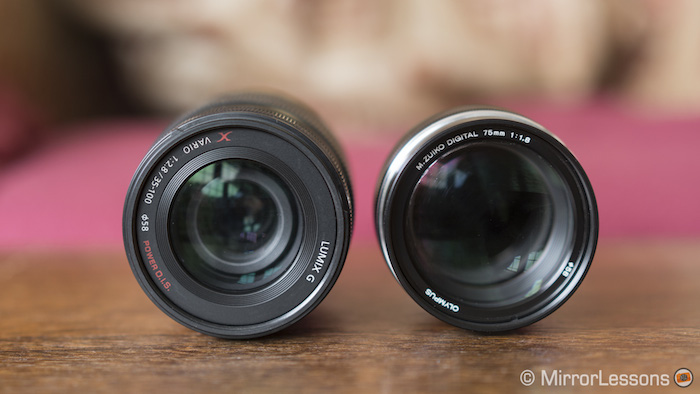
The build quality of both products is excellent, though the 75mm has more of a robust, premium feel thanks to its full-metal construction. The 35-100mm is mostly made of high-quality plastics (although the mount is metal) and features a dust and splash-proof design. It also comes with a plastic lens hood which extends the length of the lens by about 60mm. The 75mm lacks all weather resistance and doesn’t come packaged with its official lens hood, which is also made of metal and adds an extra 45mm to the lens. Both lens hoods can be reversed over the lens barrel.
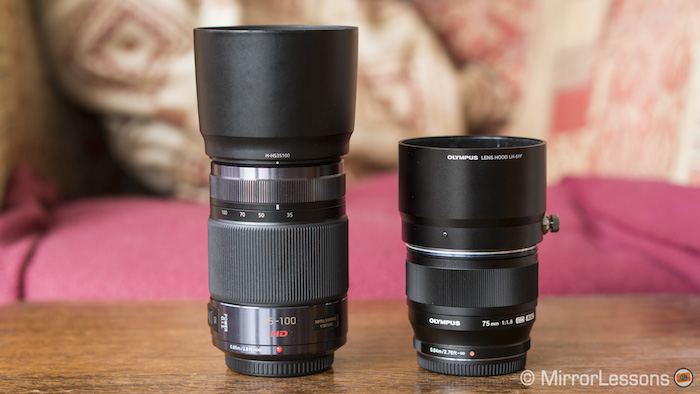
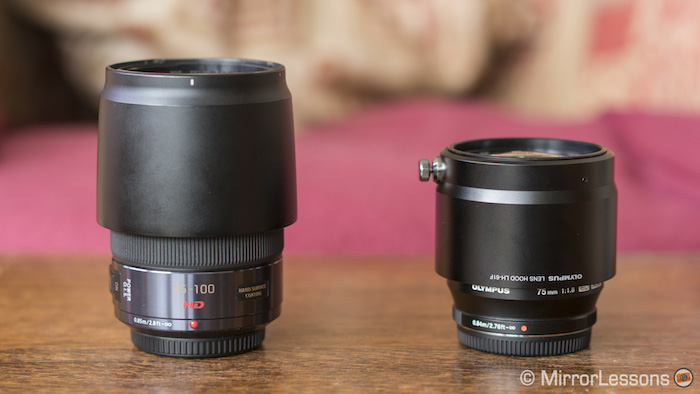
Both are a very good fit for larger Micro Four Thirds cameras like the Olympus OM-D E-M1 or the Panasonic Lumix GX8. However, you may find that they weigh down smaller bodies such as those in the Olympus Pen or Panasonic Lumix GF series.

Turning to the barrel, you’ll notice that the 75mm has a more minimalistic design with only a few markings indicating the focal length/fastest aperture/minimum focus distance and a ribbed metal focus ring. In contrast, the 35-100mm has a ribbed focus ring marked with most important focal lengths, a large ribbed zoom ring made of grippy rubber, and a handy Power O.I.S. on/off switch.
Although the various rings are comfortable to use on both lenses, I prefer the rubber focus and zoom rings of the 35-100mm because in freezing temperatures, rubber isn’t so cold to the touch.
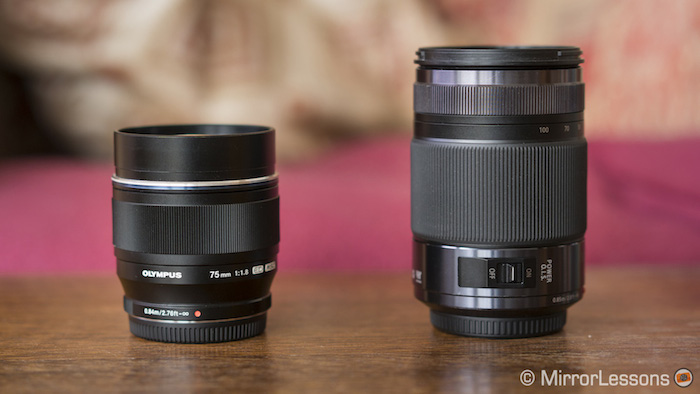
On the inside, the 75mm features 10 elements in 9 groups (including 3 ED lenses and 2 HR lenses) and a seven-blade aperture, while the 35-100mm benefits from 18 elements in 13 groups (including 2 ED lenses and 1 UED lens) and a nine-blade aperture.
Both have a minimum aperture of f/22 but with a maximum aperture of f/1.8, the 75mm beats the 35-100mm’s constant maximum aperture of f/2.8.
The two have a very similar minimum focus distance: 84cm on the 75mm and 85cm on the 35-100mm at all focal lengths. The filter diameter of both is 58mm.
Field of View
A curious feature of the 35-100mm is that its field of view changes depending on the focus distance. This phenomenon is known as focus breathing: it causes a shift in the angle of view when changing focus point from infinity to the shortest distance. It happens with many lenses from various brands and systems.
At a close focus distance, you’ll notice that the Lumix 35-100mm (set to 75mm) has a significantly wider field of view than the Olympus 75mm. In fact, to achieve a similar field of view from the two lenses, you must zoom in to 100mm with the 35-100mm.
However, if you focus on a distant object or at infinity, the 35-100mm’s field of view at 75mm is almost identical to that of the Olympus lens. This demonstrates that the focal length gives an accurate field of view with the lens focused at infinity. Indeed, the angle of view is always calculated with the focus distance set to infinity.
Looking at the second set, you’ll also observe that the Olympus lens seems to render a slightly cooler tint than the Panasonic lens despite these images having been taken with the same camera (the Olympus OM-D E-M1).
Optical Quality – Through the lens
Since we are specifically interested in how the 35-100mm compares to the 75mm, I will concentrate on the 35-100mm’s performance at this particular focal length.
Comparing a similar composition taken at a close focus distance, we can see that the 75mm exhibits better sharpness than the 35-100mm at 75mm through the aperture range, with the difference being most visible in the corners. The same applies when the zoom is set to 35mm and 100mm.
Below are two example series taken at f/5.6 showing the centre and corner performance.
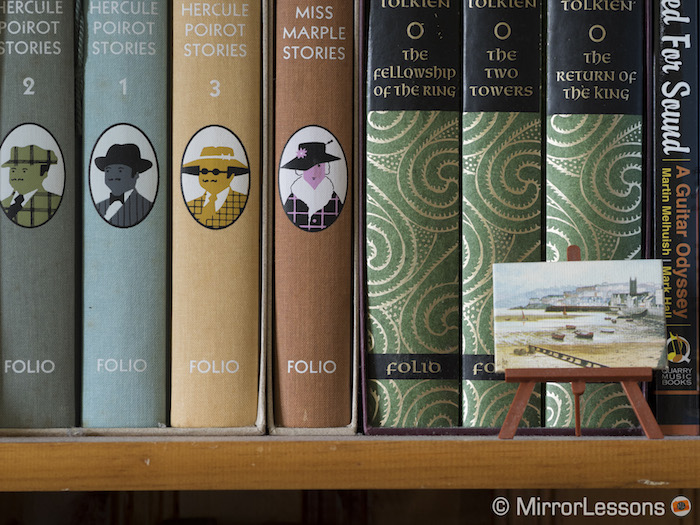

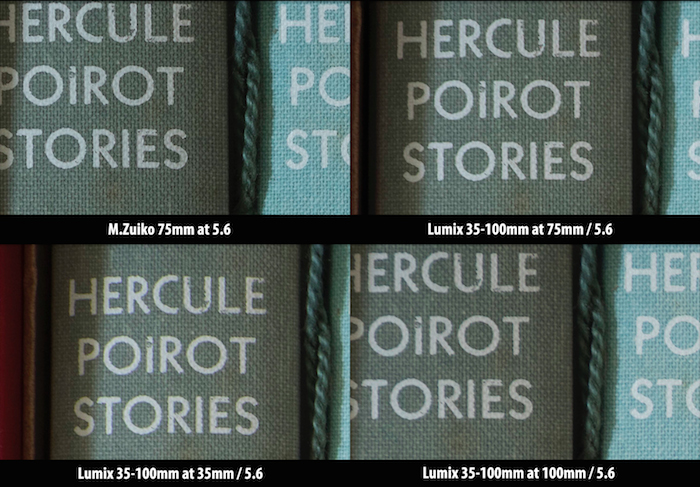
It is only when both are set to their respective fastest apertures – 1.8 on the 75mm and 2.8 on the 35-100mm – that the Lumix lens produces sharper results.

When both lenses are set to infinity, the difference in sharpness becomes more subtle at all apertures, especially at the centre. However the 75mm continues to produce better corner and edge sharpness.

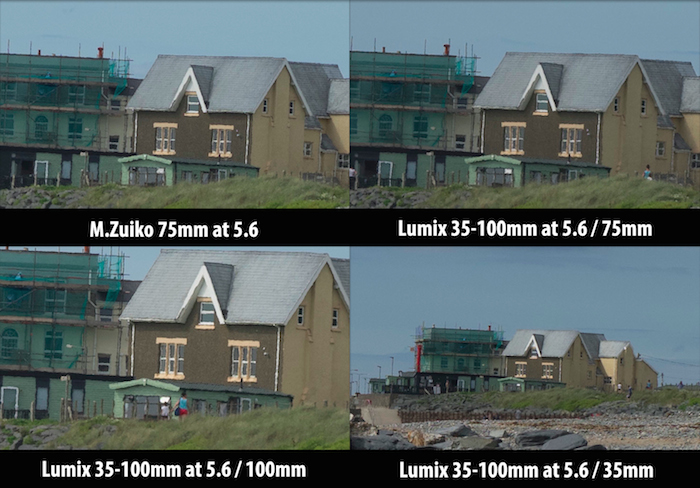
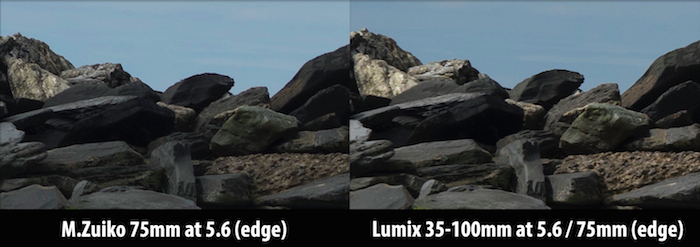
The two lenses have quite a different bokeh, even when set to the same aperture and focal length.
While the 35-100mm produces more of a “swirly” bokeh with more cat’s eye shapes, the 75mm has a calmer and smoother with very round specular highlights even at the edges of the frame. On the 35-100mm, the only area of the frame where the specular highlights are round is at the very centre.


Since the 75mm has a maximum aperture of 1.8, it is possible to render a very smooth background with good subject separation. To achieve a similar look with the 35-100mm, you must zoom in to 100mm and use the fastest aperture of 2.8.


Once you zoom out to 35mm with the Lumix lens, the bokeh becomes more chaotic and takes on an even more dramatic swirly pattern.

The Panasonic lens seems to control chromatic aberrations a little better than the Olympus lens. At f/1.8 on the 75mm, you can clearly see some purple fringing along the edges of the leaves and branches, while at f/2.8 on the 35-100mm it is absent. Stop down to f/2.8 on the 75mm and the purple fringing is greatly reduced. As always, you can easily remove any traces of chromatic aberration in post-production.
Although both lenses do flare in direct sunlight, their respective lens coatings coupled with the lens hood does a good job of mitigating its intensity in most situations. Below are the worst examples of flare I came across during my testing period.
Finally, both lenses display some corner shading. It is absent by f/4 on the 75mm but only completely disappears on the 35-100mm by f/11 and tends to be more visible at the telephoto end. Like chromatic aberration, this issue can easily be corrected in post-production.
Autofocus Performance
Having used the 75mm and 35-100mm extensively for events and action photography, we can confirm that the autofocus performance of both lenses is silent and accurate virtually in all light conditions (except extremely low-light) and regardless of whether you shoot stills or video. Both lenses incorporate an inner focus system and the 35-100mm comes with a stepping motor that lets it focus smoothly and silently when capturing video.




Below you can find a direct autofocus comparison between the two lenses. The first two series of Mat running towards me show the performance on the Olympus OM-D E-M1, while the second pair was taken using the Panasonic Lumix GX85. Both cameras were set to continuous autofocus / high burst / single point.
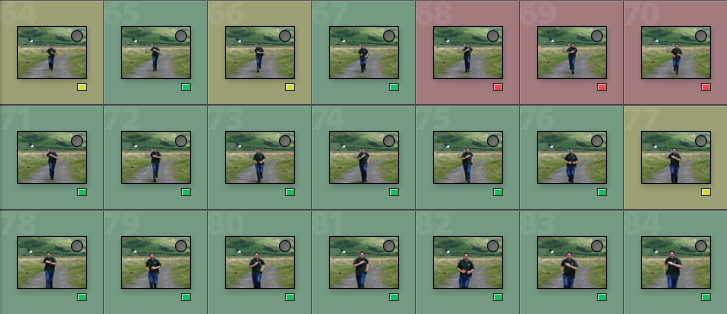
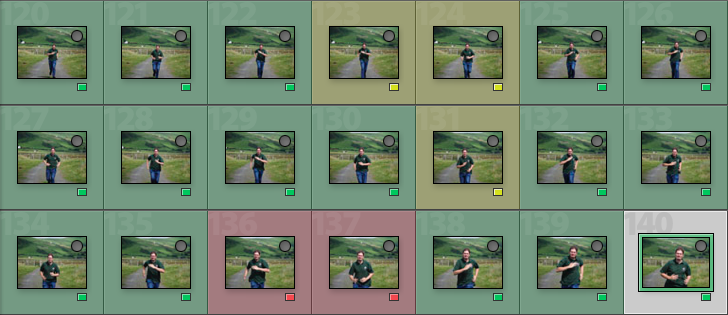
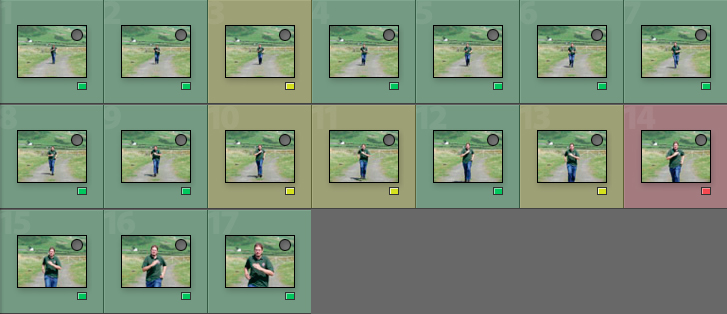
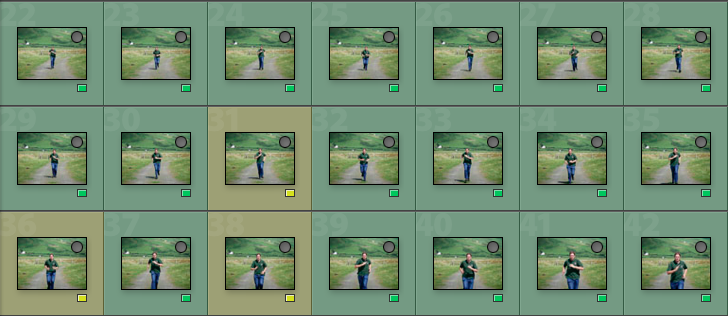
As you can see, I was able to achieve very good results regardless of the lens/camera combination. That said, the Lumix lens clearly performed better on the Lumix GX85: it had better focus accuracy and was able to take more shots in a single continuous burst. This is because it works in tandem with the camera’s Depth from Defocus contrast detection autofocus technology and supports high speed digital signal exchange at 240 fps.
The manual focus experience is very good with both the 75mm and 35-100mm, especially when combined with the focus peaking and magnification of Olympus or Panasonic cameras.
For portraits or events, it is rare you’ll ever have to use manual focus because the autofocus is so quick and reliable. However, if you really want to fine-tune your focus, the “fly-by-wire” focus ring is more than adequate to do the job.
Optical Stabilisation
A significant advantage of the 35-100mm, especially on non-stabilised Micro Four Thirds bodies, is its optical stabilisation known as Power O.I.S.
On its own, it works very well, allowing you to take sharp shots down to around 1/8 of a second at 100mm.

However, when combined with the in-body stabilisation of the latest Panasonic Lumix cameras – namely the GX8 and GX85 at this point in time – you can take full advantage of Panasonic’s new stabilisation system called Dual I.S. It is extremely effective, allowing you to take sharp shots down to almost 1 second at 100mm if you are very steady. Happily, it also works well for video, particularly for static shots when combined with electronic stabilisation.

If you’d like to know more about Panasonic’s Dual I.S. system and see some sample footage taken with the 75mm and 35-100mm on the Panasonic Lumix GX85 and Olympus Pen F, you can watch the in-depth video below.
The reason the 75mm does not incorporate optical stabilisation is because all the latest Olympus bodies incorporate some form of in-body stabilisation. Combined with the 75mm, you can manage sharp shots down to 1/10 of a second on the OM-D E-M1 if you are extremely steady. Without sensor stabilisation, I would stay at a minimum of 1/80 of a second to ensure sharpness.

Conclusion
When Mat was working as an events photographer, he initially purchased the Lumix 35-100mm f/2.8 for its fast constant aperture and handy focal range, and it served him very well for over a year.
However, no sooner did we add the 75mm f/1.8 to our collection than he started using it more and more for his work in lieu of the zoom lens. This was mainly because the brighter aperture allowed him to avoid using very high ISO values, which is advantageous when you often work in poor light. As for the loss of the zoom range, he usually found that he could frame his subject by zooming with his feet.
The moral of the story is that both lenses are excellent performers but one might suit you better than the other depending on the light conditions you usually encounter, how free you are to move around, and the pace at which you need to work.
The 35-100mm f/2.8 is the better lens if you don’t have the time, possibility or patience to adjust your composition by moving around. It gives you more flexibility and doesn’t compromise on optical quality despite being a zoom. What’s more, it comes with optical stabilisation (OIS), so you can safely use it at slow shutter speeds on any Micro Four Thirds body. OIS is also a welcome feature for video work but bear in mind that it can produce some jittery effects in the footage.
If, however, you have the chance to move around or if you tend to work in difficult light conditions as Mat used to, you will likely find the 75mm f/1.8 a more comfortable solution because of its bright aperture. It is also one of the sharpest Micro Four Thirds primes with one of the loveliest bokehs, making it an excellent companion for portrait and headshot work. The only drawback is that it lacks stabilisation, so it is better to use it with stabilised Micro Four Thirds bodies if you plan to do a lot of handheld work in poor light. For video, a monopod is a must-have and a proper tripod will certainly come in handy.
Check price of the M.Zuiko 75mm on
Amazon | Amazon UK | B&H Photo | eBay
Check price of the Lumix G 35-100mm on
Amazon | Amazon UK | B&H Photo | eBay
Second-hand Olympus lenses on
Second-hand Panasonic lenses on
Sample Images
















